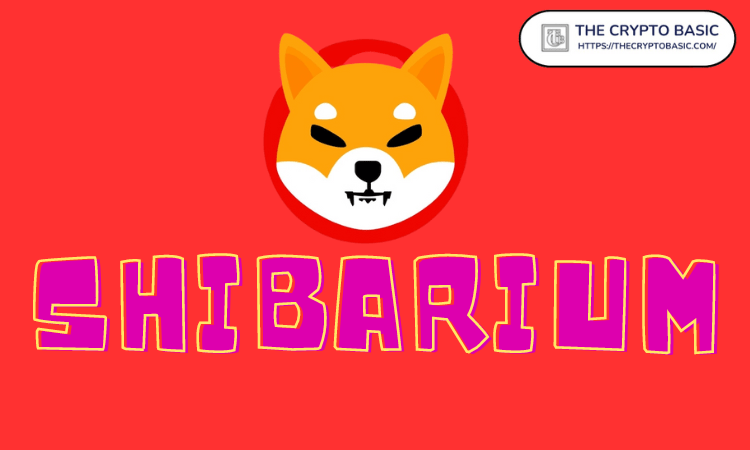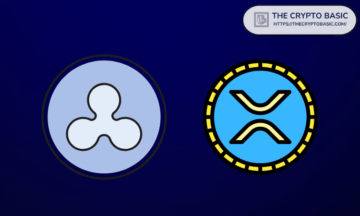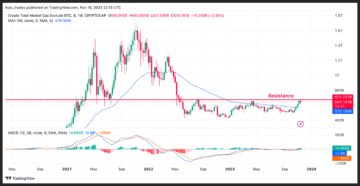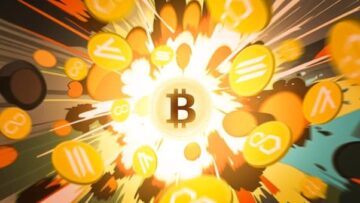
Shibarium developers fend off Rinia fork claims.
Shytoshi Kusama, Shiba Inu’s anonymous volunteer lead developer, has taken a jab at popular crypto Youtuber Ben Armstrong, aka Bitboy Crypto.
“Hey @Bitboy_Crypto how are those T-shirt sales on your Shib videos?” Shytoshi wrote in a tweet today. “Good? Great. Make sure you bring receipts okay?”
Hey @Bitboy_Crypto how are those T-shirt sales on your Shib videos? Good? Great. Make sure you bring receipts okay?
— Shytoshi Kusama™ (@ShytoshiKusama) March 16, 2023
In a tweet today, the latter promised to unveil the identity of Ryoshi, the mysterious Shiba Inu founder, in response to recent claims that Shibarium developers copied the Shibarium code from Firechain’s Rinia testnet, an upcoming project. The supporting argument is that both projects share the same chain ID, 917.
Wait until I dox the founder of $SHIB it’s coming this week. Heck maybe tmrw https://t.co/aAKW39I92G
— Ben Armstrong (@Bitboy_Crypto) March 16, 2023
It is worth noting that the identity of the SHIB creator remains one of crypto’s biggest mysteries that has again dominated discussions in recent weeks. As reported about a week ago, a Coinbase director had drawn links between the anonymous founder and Sam Bankman-Fried’s Alameda Research.
– Advertisement –
In tweets today, Bitboy asserts that Sam Bankman-Fried was involved in the project but is not the founder.
“Sam was involved early on once the two co-founders split,” the controversial influencer writes. “One left and made his own chain. The main founder worked with Sam as the project got off the ground.”
Sam was involved early on once the two co-founders split. One left and made his own chain. The main founder worked with Sam as the project got off the ground.
— Ben Armstrong (@Bitboy_Crypto) March 16, 2023
Is Shibarium A Rinia Fork?
Did Shibarium developers, after over a year of supposed development and potentially millions in funding, just copy the code from another project? This is potentially the question on the minds of several SHIB supporters.
In a statement on the Shibariumtech Telegram, Kusama dismissed the latest claims as a ploy to get holders to dump their BONE holdings. Relaying information from Kaal Dhairya, the lead developer on the Shibarium project, Kusama asserted that both projects having the same chain ID was not a problem as they were both in a testing phase, pointing out that multiple testnet works would be deployed in the future in response to any discovered bugs.
In a recent Twitter thread, Kaal gives more insight into the issue, noting that developers had randomly picked chain ID since the chain was deployed. The lead developer disclosed that 417 was the ID at launch, while developers chose 517 for staging and 917 for the beta. According to Kaal, these IDs were not taken at the time. However, he says he failed to re-check before launching Puppynet. Hence he did not realize that Firechain’s Rinia already took the ID.
Dispelling some FUD ever since we did the Alpha network deployment few chain IDs were picked randomly- 417(Alpha), 517(Staging), 917(pre-pod/beta) and these chain were not registered anywhere at that time, I made a mistake to not recheck when the puppynet network was launched
— ShibDev4Evr (@kaaldhairya) March 16, 2023
Consequently, Kaal has said that developers would be redeploying a new version of the Testnet with a different ID. While Kaal says such deployments would be rare in the future, he notes that it is possible as they are still in the beta phase. In response to inquiries, Kaal noted that redeployment would take 4 to 5 days, asserting that they would release the project documentation at the same time.
What is Chain ID?
There are two identifiers for Ethereum chains. These are the network ID and chain ID. They often have the same value generated automatically when the chain is deployed. However, developers can change this default ID if they choose to.
The chain ID is used in the transaction signature process. This means that if two chains have the same chain ID, transactions signed on one would also execute on the other. Hence the reason for the chain ID concept.
Before Kaal’s tweets, to get to the bottom of the recent claims, The Crypto Basic reached out to key insiders, including Kusama, Ringoshi Toitsu, a Unification validator, and Firechain’s lead developer KRYPSTEIN (@MrDonCG).
At the time of writing, only Toitsu responded. Toitsu shared the Shibarium GitHub repository, which confirms Kaal’s statement that the developers had changed the chain ID twice from 417 to 517 and finally to 917 on Feb. 16.
The Crypto Basic also found and looked through the Rinia GitHub. We found that the network’s default chain ID was 529. However, it was changed to 917 in December. It is unclear when Firechain registered the ID but first disclosed its listing on ChainList on Feb. 27. Notably, Rinia developers claim to have chosen the ID to honor the lead developer’s grandmother.
@thefirechain sacrifice phase(ICO) starts soon! 😎
RINIA TESTNET
ChainId: 917 (9-17, RIP granny)Find it on https://t.co/MHrLjLdQNrhttps://t.co/cao9oqAbZN
— DONASWAP (@donaswap) February 27, 2023
In addition, complaints about the shared ID only surfaced five days ago when Shibarium beta launched. Notably, there is no mention of Shibarium developers stealing Rinia’s code.
Here @ShibariumNet a whole list of EVM ChainId’s https://t.co/e7V4ygD0WK as you can see 917 is RINIA (Firechain’s Testnet’s ChainId) Please change your chainID and keep the respect to the grandmother of @MrDonGG the #Shibasigliere
— DONASWAP (@donaswap) March 11, 2023
As recently as Feb. 20, the Firechain developer can be seen expressing his love for Shiba Inu.
#SHIB i love you! Because of you I love crypto the way I love it @Shibtoken
Yes, I am @donaswap but you and I both know we fam! #SHIBASIGLIERE #SHIBACILIESFINNEST
— KRYPTSTEIN (🍩DONASWAP🍩 / 🔥FIRECHAIN🔗) (@MrDonGG) February 20, 2023
Consequently, barring any further evidence, it all appears to be a coincidence.
More importantly, it bears mentioning that chain ID is not the only thing that makes a chain unique. Other things must be considered, including consensus rules and digital signatures. At the time of writing, there is no evidence that these are the same.
– Advertisement –
- SEO Powered Content & PR Distribution. Get Amplified Today.
- Platoblockchain. Web3 Metaverse Intelligence. Knowledge Amplified. Access Here.
- Source: https://thecryptobasic.com/2023/03/16/shiba-inu-lead-developer-bashes-bitboy-as-shibarium-fud-gains-momentum/?utm_source=rss&utm_medium=rss&utm_campaign=shiba-inu-lead-developer-bashes-bitboy-as-shibarium-fud-gains-momentum
- :is
- 11
- 7
- 8
- a
- About
- According
- addition
- Advertisement
- After
- Alameda
- ALAMEDA RESEARCH
- All
- Alpha
- already
- and
- Anonymous
- Another
- anywhere
- ARE
- argument
- Armstrong
- AS
- Asserting
- At
- automatically
- Bankman-Fried
- BE
- Bears
- because
- before
- Ben Armstrong
- beta
- between
- Biggest
- Bitboy
- Bitboy Crypto
- BONE
- Bottom
- bring
- bugs
- CAN
- chain
- Chain ID
- chains
- change
- Choose
- chose
- chosen
- claim
- claims
- co-founders
- code
- coinbase
- coincidence
- coming
- complaints
- concept
- Consensus
- considered
- controversial
- creator
- crypto
- Days
- December
- Default
- deployed
- deployment
- deployments
- Developer
- developers
- Development
- DID
- different
- digital
- Director
- discovered
- discussions
- documentation
- drawn
- dump
- Early
- ethereum
- EVER
- evidence
- EVM
- execute
- Failed
- Feb
- few
- Finally
- First
- For
- fork
- found
- founder
- from
- FUD
- funding
- further
- future
- Gains
- generated
- get
- gives
- good
- great
- Ground
- Have
- having
- holders
- Holdings
- How
- However
- HTTPS
- i
- ICO
- ID
- Identity
- in
- Including
- influencer
- information
- Inquiries
- insight
- Inu
- involved
- issue
- IT
- ITS
- Keep
- Key
- Know
- Kusama
- latest
- launch
- launching
- lead
- links
- List
- listing
- looked
- love
- made
- Main
- make
- MAKES
- means
- millions
- minds
- mistake
- Momentum
- more
- multiple
- mysterious
- network
- New
- notably
- noted
- Notes
- of
- Okay
- on
- ONE
- Other
- own
- phase
- picked
- plato
- Plato Data Intelligence
- PlatoData
- please
- Popular
- possible
- potentially
- Problem
- process
- project
- projects
- promised
- question
- RARE
- reached
- realize
- reason
- receipts
- recent
- recently
- registered
- release
- remains
- Reported
- research
- response
- rules
- s
- sacrifice
- Said
- sales
- Sam
- Sam Bankman-Fried
- same
- says
- several
- Share
- shared
- SHIB
- Shiba
- Shiba Inu
- Shibarium
- Signatures
- signed
- since
- some
- split
- staging
- starts
- Statement
- Still
- such
- supporters
- Supporting
- supposed
- Take
- Telegram
- Testing
- testnet
- that
- The
- The Future
- their
- These
- thing
- things
- this week
- Through
- time
- to
- today
- transaction
- Transactions
- true
- tweet
- tweets
- Twice
- unique
- upcoming
- Validator
- value
- version
- Videos
- volunteer
- Way..
- week
- Weeks
- which
- while
- with
- worked
- works
- worth
- would
- writing
- year
- Your
- youtuber
- zephyrnet












